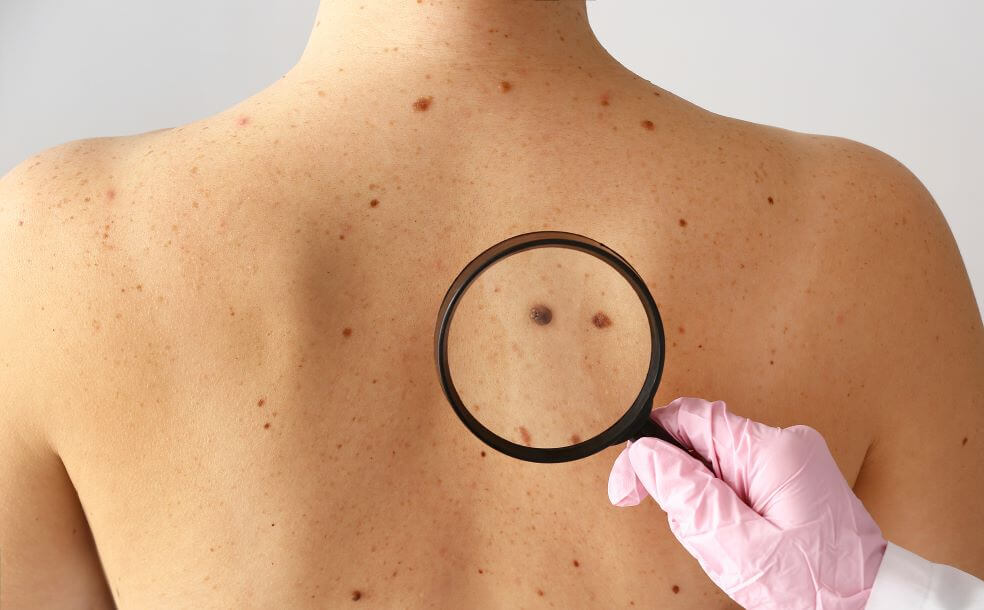When people hear melanoma or skin cancer, they may immediately think about sun damage as being the most commonly implicated etiology. While exposure to the sun’s damaging UV rays is a leading cause of skin cancer, it’s not the only factor that increases the risk for melanoma. According to Dr. Melody Maarouf of U.S. Dermatology Partners in Phoenix and Scottsdale, Arizona, “Most forms of skin cancer are preventable with proper photoprotection. While not all melanoma risks are modifiable, knowing the necessary preventive measures helps to reduce overall risk. Working with a dermatologist to receive regular screenings will assist in identifying less invasive and serious skin cancers, and may further reduce the risk for skin cancers.” In this blog, Dr. Maarouf walks through just what melanoma is and describes a few of the less commonly known risk factors associated with this condition.
Melanoma: Not Just a Sun-Related Concern
While melanoma skin cancer is relatively rare, it’s still responsible for the majority of deaths related to skin cancer. Sun exposure is a leading contributor to the development of melanoma, but it is far from the only risk factor associated with increased development of skin cancer. According to Dr. Maarouf, “Developing melanoma is most frequently linked to sun damage. However, some people do develop melanoma without excessive sun exposure, and there are other risk factors that can make developing melanoma increasingly more likely.”
In addition to knowing the risk factors, it’s also important to learn the common symptoms of melanoma, so you can recognize this condition as soon as it begins to develop. Luckily, recognizing melanoma is as easy as learning your ABCDEs:
- A – Asymmetry – a spot that is different on one side.
- B – Border – the perimeter of a spot that is scalloped or uneven.
- C – Color – a spot that is different in color than other spots or has different colors within the same spot.
- D – Diameter – a spot that is larger in diameter than a #2 pencil eraser.
- E – Evolution – a spot that is changing quickly.
Genetics and Family History
According to Dr. Maarouf, “Like many other forms of cancer, genetics play a significant role in whether an individual will have an increased likelihood to develop skin cancer. While research indicates that a CDKN2A mutation is most indicative of a risk for melanoma, medical professionals only recommend genetic testing if the patient fits the criteria for ‘the rule of 3’s.’ This criterion mandates that there must be a sum of three cases of invasive melanoma or pancreatic cancer (which also harbors a CDKN2A mutation) in the patient and/or in first-degree relatives. Those with a family history of melanoma should visit a dermatologist for regular skin cancer screenings, perform monthly skin cancer self-checks, and take every precaution to protect against sun damage.”
Moles and Skin Type
Melanoma skin cancer develops when cancer cells form from pigment producing cells, known as melanocytes. For this reason, melanoma lesions are often thought to be associated with moles and freckles. Most melanomas actually arise de novo; meaning new lesions are more common than changes in an existing mole or freckle. However, those who have numerous freckles and moles may be at an increased risk for melanoma skin cancer. This is especially true for those who suffer from atypical mole syndrome or who have congenital moles, which are present at birth. Such individuals’ moles may vary drastically in color, size, or shape compared to their other moles. Additionally, those with lighter skin, hair, and eye color are also at higher risk for melanoma compared to those with darker skin tones.
Immune System and Health Conditions
Those who have a weakened or compromised immune system are more likely to develop melanoma because the person’s immune system is unable to fight off and heal damaged cells that develop into cancer. A weakened immune system can occur due to immune-suppressing illnesses like human immunodeficiency virus (HIV), drugs taken to suppress immune response, or chronic illnesses. Maintaining overall health and well-being and managing chronic health conditions in partnership with physicians and other professionals is an essential part of reducing the risk for skin cancers.
Environmental and Occupational Factors
The environment we live and work in plays a huge role in our risk for skin cancer. Working outdoors increases sun exposure, which leads to greater cumulative sun damage over a lifetime. Living or working in places with frequent exposure to chemicals, radiation, and other environmental irritants can indirectly contribute to the development of certain types of skin cancer.
Previous History of Cancer
Those who have previously had melanoma, basal cell carcinoma, squamous cell carcinoma, and other types of skin cancer are at increased risk for developing melanoma. Additionally, a weakened immune system related to other forms of cancer may also increase the risk of developing melanoma later in life. If you’ve ever had any form of cancer, it’s essential to perform regular skin cancer self-checks and report irregularities to your dermatologist in order to receive a diagnosis in the earliest and most treatable stages.
Taking Charge of Your Skin Health
The risk factors for melanoma discussed in this blog, according to Dr. Maarouf, “are some of the leading contributors that increase the risk for skin cancers, including melanoma. However, some people without any of these risk factors can still develop melanoma, so make sure to take steps to prevent skin cancer. These precautionary steps should include applying sunscreen every day, limiting sun exposure during peak hours, and performing regular skin cancer self-checks. Colorscience Total Protection No-Show Sunscreen SPF 50 is a great everyday sunscreen option for most skin types. Your dermatologist can provide you with more specific recommendations as well as walk you through how to perform at-home skin cancer self-exams to help catch any developing skin cancer at the earliest possible stage.”
Talk to a Dermatologist About Melanoma & Skin Cancer Prevention
It’s important to visit with a dermatologist at least once a year for a professional skin cancer screening, especially if you have many of the identified risk factors in this blog and are at moderate to high risk for melanoma and other forms of skin cancer. This annual screening should be performed in addition to regular at-home skin cancer self-checks. Whether you’ve noticed areas of concern or want to schedule a preventive screening, the U.S. Dermatology Partners team is here to help. Take a few moments to complete our online scheduling request form to set up your visit with one of our trusted local dermatology teams.
Find a location near me
or


